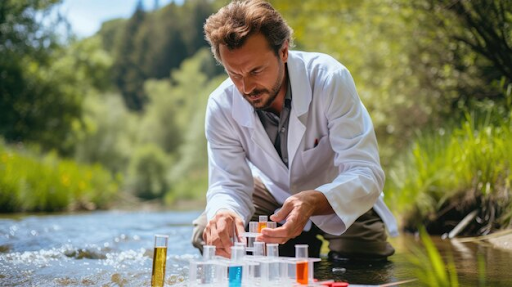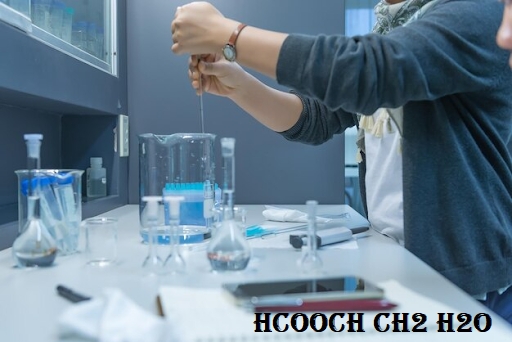Understanding molecular structures and their importance in chemistry opens the door to discovering their significance across various fields. HCOOCH CH2 H2O is one such compound that carries complexity and relevance. Its composition, structural representation, and practical applications make it a subject of interest for chemists and researchers alike.
What Is HCOOCH CH2 H2O?
HCOOCH CH2 H2O is a molecular formula that combines distinct functional groups and structures. It may represent a form of ether, alcohol, or ester, depending on the atomic arrangement. This compound exhibits unique behaviors influenced by its molecular components, making it valuable for understanding chemical reactions and processes.
Breaking Down the Molecular Components
The first section, HCOOCH, suggests a methoxy group linked to a carbonyl group, often found in esters or similar compounds. The methylene group, CH2, acts as a structural link, giving molecular architectural flexibility. The fact that H2O is included emphasizes its connection to hydration activities or its role as a reactant or product in chemical and biological processes.
Structural Insights into HCOOCH CH2 H2O
The structural formula of this compound showcases its atomic arrangement and bonding nature. One can better understand its properties and potential reactivity by visualizing its structure. Lewis structures and three-dimensional models can offer a deeper insight into the interactions between functional groups within this molecule.
Drawing the Molecule: A Visual Representation
Depicting HCOOCH CH2 H2O involves arranging its components to reveal their spatial relationships. Determining the molecule’s stability and its interactions with other chemicals depends heavily on this depiction. Understanding may be improved by using molecular diagrams to show electron sharing and bonding patterns.
Stereochemistry and Its Influence
Stereochemistry plays a vital role in defining the physical and chemical behavior of HCOOCH CH2 H2O. The three-dimensional arrangement of its atoms can lead to different stereoisomers, each with unique properties. These variations directly impact the molecule’s functionality in industrial and biological contexts.
Formation of HCOOCH CH2 H2O
The synthesis of HCOOCH CH2 H2O occurs through specific chemical reactions.One such mechanism is esterification, which is the reaction of alcohol with a carboxylic acid to create an ester. This chemical is also formed by hydration reactions, in which reactants and water combine to produce distinct molecular structures.
Applications of HCOOCH CH2 H2O
The compound’s versatility extends to various fields, from biochemistry to industrial applications. In biochemistry, it may serve as an intermediate or product in metabolic processes, influencing pathways critical to life sciences. Industrially, it finds utility as a solvent, reactant, or additive in numerous formulations, including pharmaceuticals and coatings.
Chemical Properties of HCOOCH CH2 H2O
HCOOCH CH2 H2O demonstrates distinctive chemical properties due to the presence of its functional groups. Reactivity patterns often involve nucleophilic substitutions, with the methoxy group playing a pivotal role. Its stability under varying conditions is influenced by hydrolysis and interaction with water molecules.

Solubility and Polarity
The molecule’s solubility in polar solvents like water indicates how polar it is. This characteristic facilitates its participation in aqueous processes and enhances its use in several scientific and industrial fields. Understanding its solubility parameters helps predict its behavior in complex chemical environments.
The Significance of HCOOCH CH2 H2O
HCOOCH CH2 H2O stands as an example of molecular complexity with practical importance. Its structural intricacies, formation mechanisms, and diverse applications underline its value in advancing scientific knowledge and innovation. Exploring this compound enriches the understanding of molecular interactions and inspires developments in chemistry, biochemistry, and industrial processes.
Conclusion
HCOOCH CH2 H2O represents a fascinating example of molecular diversity and significance. Its structure and properties offer insight into the intricate world of chemical compounds, where functional groups and atomic arrangements dictate behavior and utility. HCOOCH CH2 H2O is a molecule that is worth researching because of its function in chemical processes as well as its uses in industry and biology. In addition to expanding our understanding of chemistry, comprehending this chemical opens the door to creative scientific and technological solutions.
Read More: Since 1998, JonathanSpire has been a reliable voice in technology
FAQs about HCOOCH CH2 H2O
1. What is HCOOCH CH2 H2O?
HCOOCH CH2 H2O is a molecular formula representing a compound that likely involves ester, ether, or alcohol groups. Its precise structure depends on the specific arrangement of atoms.
2. Which uses does HCOOCH CH2 H2O have?
This substance may be used as a solvent, an ingredient in coatings and medications, or an intermediary in chemical processes, among other uses in biochemistry and industry.
3. How is HCOOCH CH2 H2O formed?
It is commonly formed through processes like esterification or hydration reactions, where alcohols react with acids or water and interact with other reactants to form this compound.
4. Is HCOOCH CH2 H2O water soluble?
Yes, this chemical is often soluble in water and other polar solvents since it contains polar functional groups.
5. What is the significance of HCOOCH CH2 H2O in chemistry?
HCOOCH CH2 H2O demonstrates unique reactivity and properties due to its molecular structure. Its study helps chemists understand functional group behavior, molecular interactions, and applications in various fields.
6. What is the role of stereochemistry in HCOOCH CH2 H2O?
By changing the three-dimensional arrangement of atoms, stereochemistry affects a molecule’s reactivity, physical properties, and interactions with other molecules.


